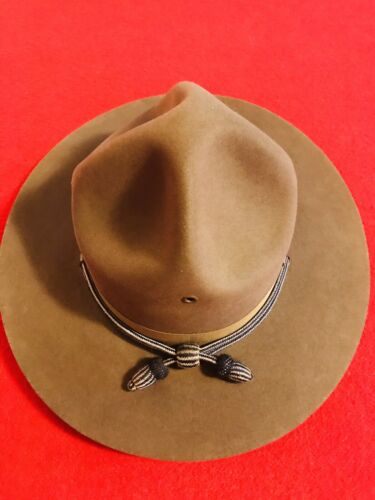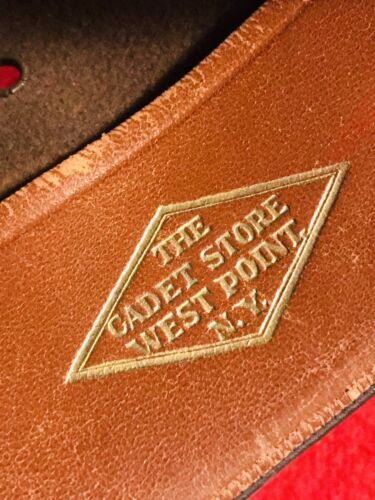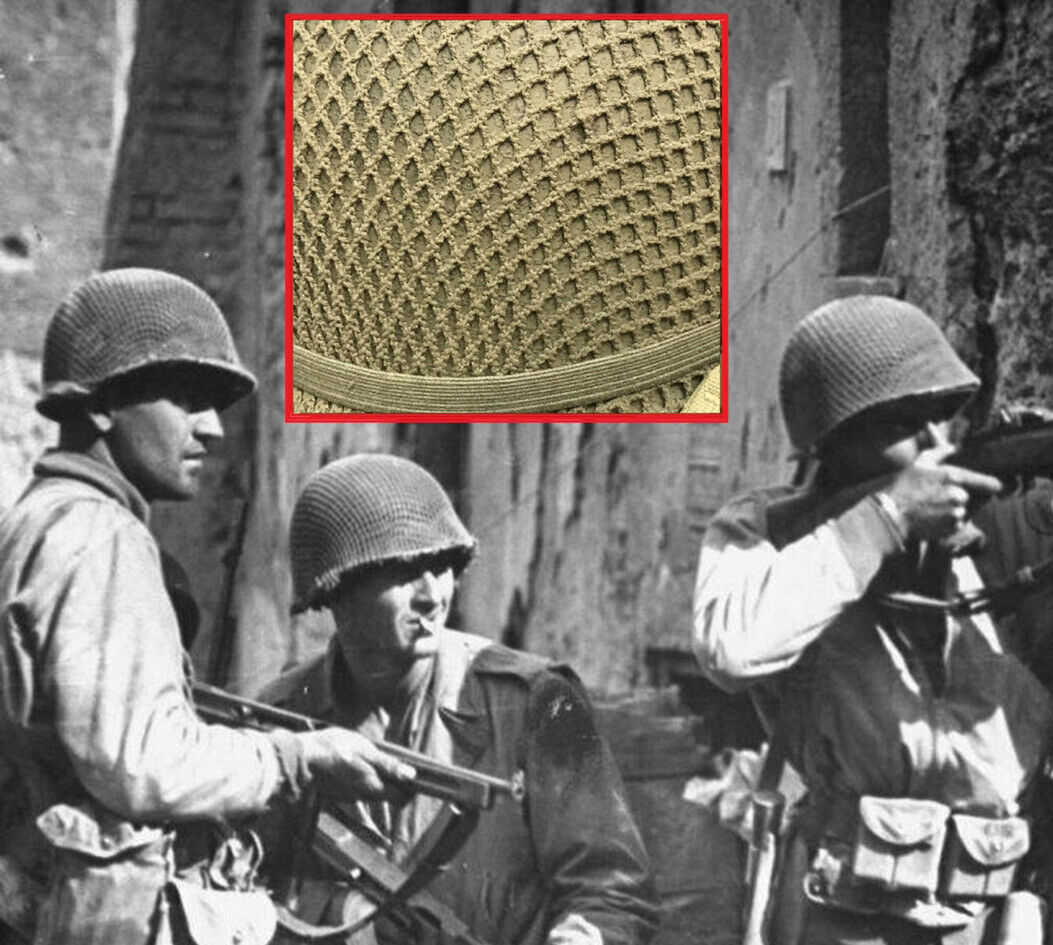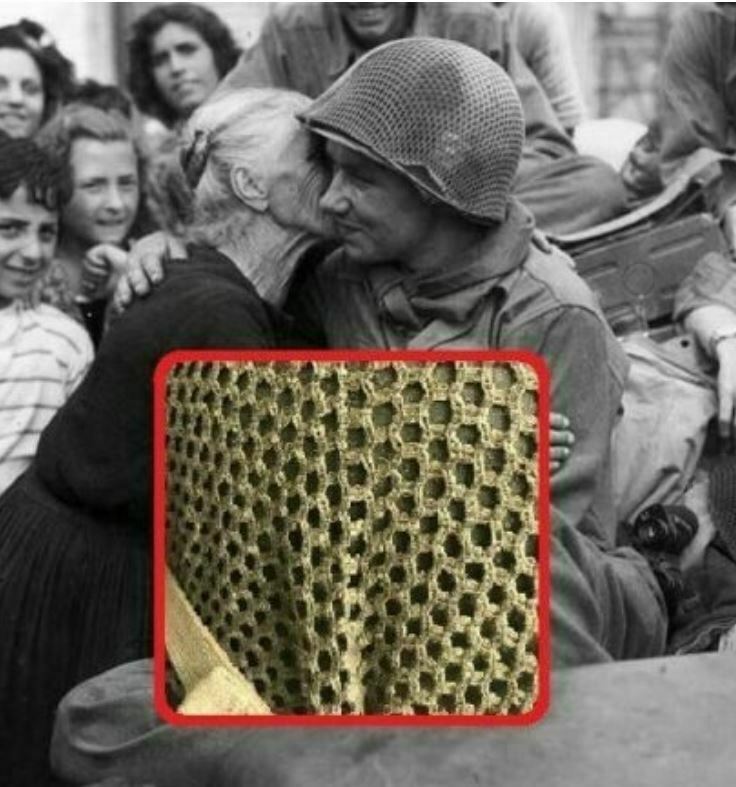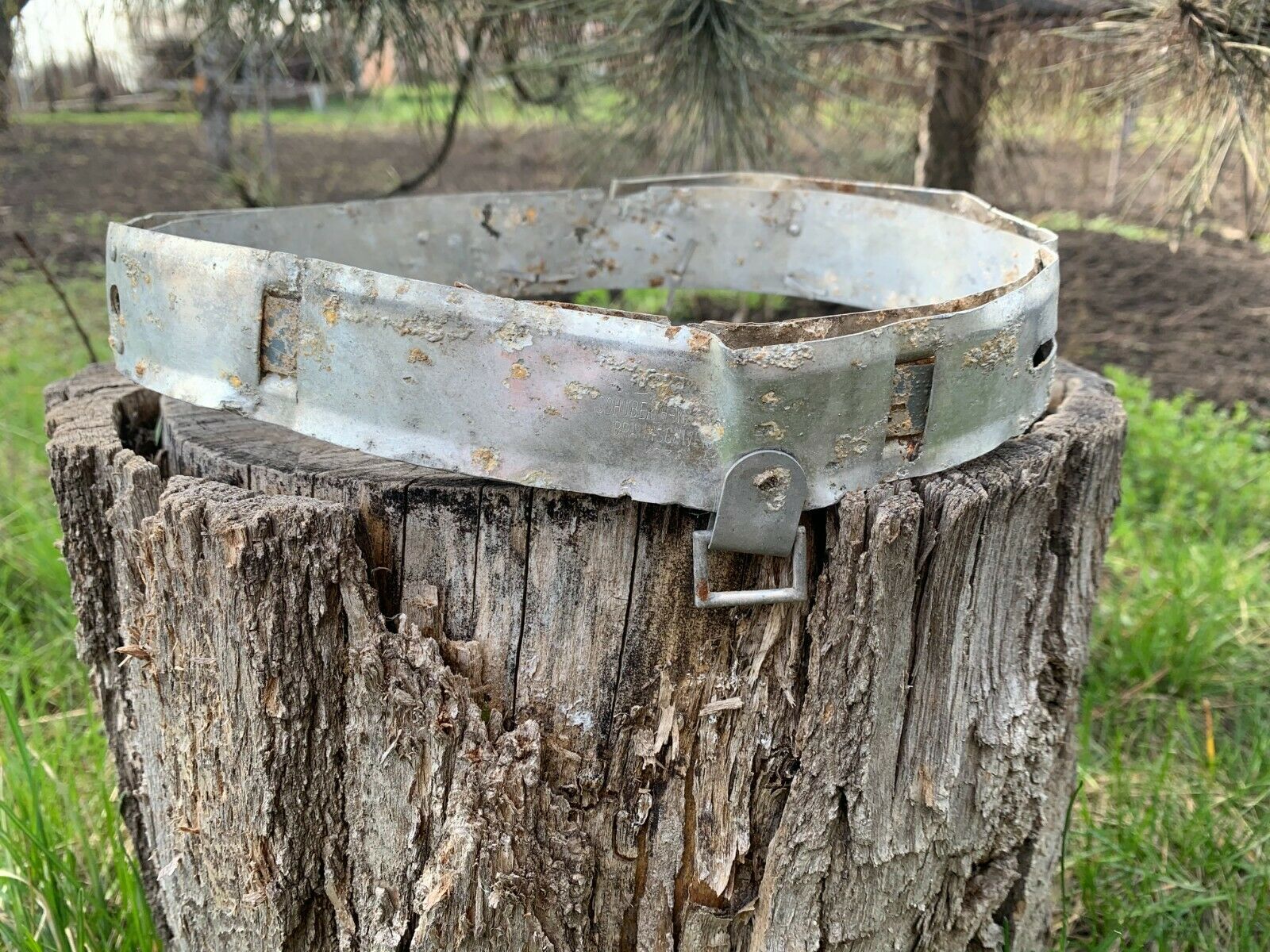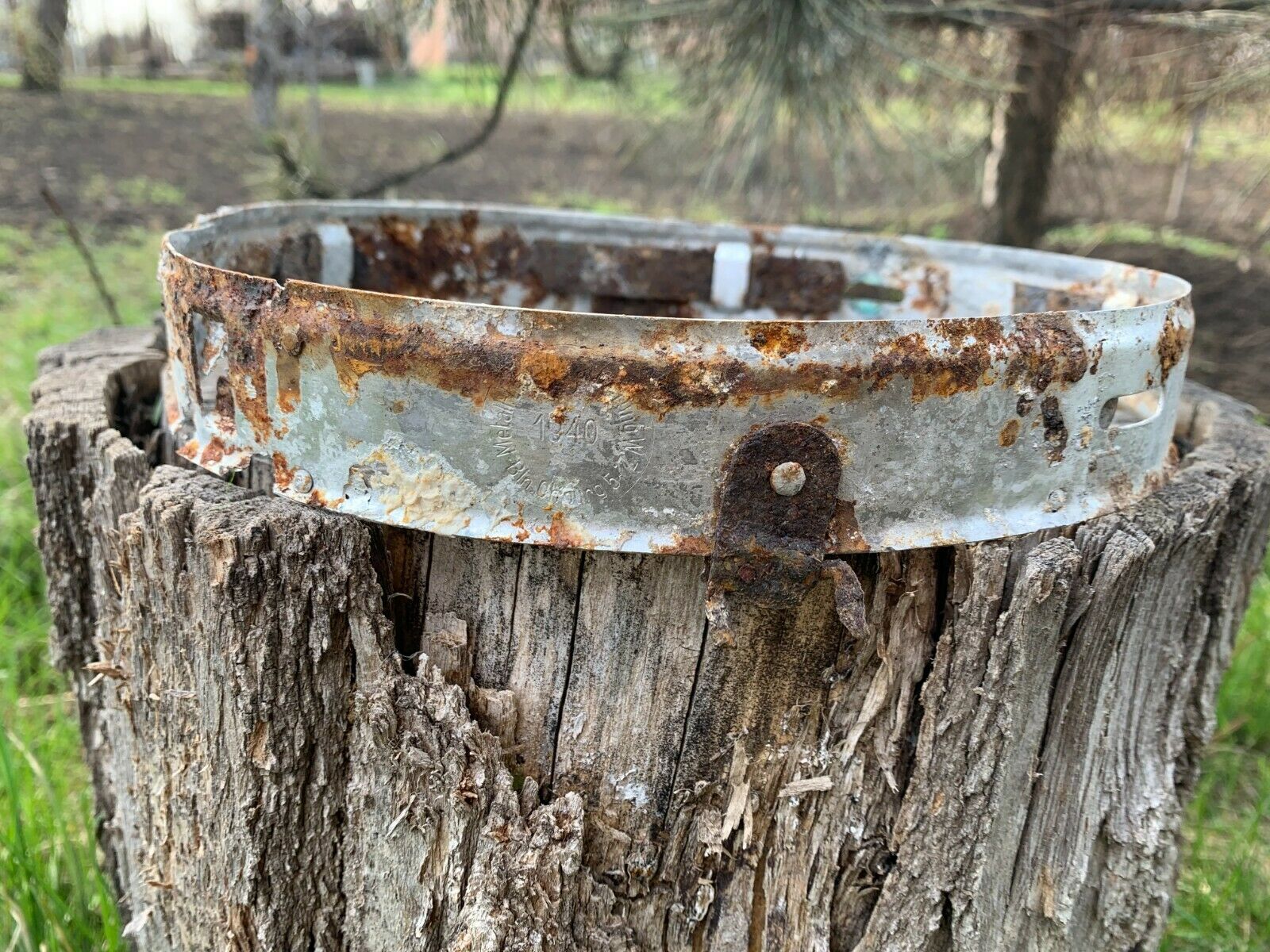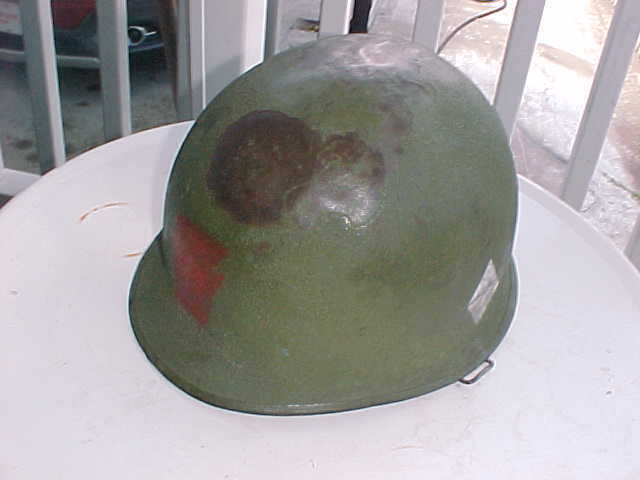-40%
WW2 West Point USMA Campaign Hat (J. B. Graham, Class ‘45) “Cadet Store/STETSON”
$ 92.4
- Description
- Size Guide
Description
WW2 West Point USMA Campaign Hat (“Named” toJames Butler Graham
, Class of 1945)
“The Cadet Store / STETSON”
Complete with the ORIGINAL “
SILVER BULLION & BLACK WOOL” HAT CORD
with Acorns and the
ORIGINAL
“Officer Quality” 3-Piece
Russet
LEATHER
CHINSTRAP!!
-
ZERO
fraying or staining whatsoever to the
CORD!
-
ZERO
cracks, separations, dry rot, or verdigris to the
LEATHER
CHINSTRAP
or corrosion to the
NICKELED STEEL BUCKLE
(not the inexpensive stamped steel
Buckle seen on EM Chinstraps)
, D
’
RINGS
, or
SNAPS
!!
-
NOTE
: NO
Distinctive
Unit
Insigne
(
DUI
) was to be worn on the front of the Crown of this Hat!
This was made by the historic
J
OHN B. STETSON HAT COMPANY
for the
CADET STORE
no later than 1942!!
In additon to the
John B. Stetson Hat Company
, 24 other companies manufactured Campaign Hats for the Army (and the U.S.M.C.), but
ONLY
the
Stetson Company
supplied the "Officer Quality" Campaign Hats to the
Corps of Cadets of the United States Military Academy from the outset of their use at West Point before the turn of the last century.
- This hat was issued in July 1942 to a future
SIGNAL CORPS
Officer,
U.S Army,
then a
Plebe
in the
Corps of Cadets, United States Military Academy.
Named on the inside of the Sweatband in Black fountain pen ink,
“GRAHAM, J.B.
”.
Graham was commissioned June 5, 1945, two months before the conclusion of hostilities, V.J. Day, August 15, 1945.
His Diploma was presented to him by
General Omar N. Bradley.
A photocopy of
James Butler Graham’s Class of 1945
biographical entry from
the
"
REGISTER
OF
GRADUATES
OF
THE
U.S. MILITARY
ACADEMY"
published by the
ASSOCIATION OF GRADUATES
will be included.
- The Fur Felt Crown and Brim of this
OFFICER’S FIELD HAT
are in
PERFECT
condition!
- Size is an approximate "7".
-
ZERO
moth tracking, mildew stains, or marks! (The center-front of the Crown has
NEVER
been pierced to receive a DUI.)
- The flat
UNSTITCHED
BRIM
and the lower 5 1/2"
CROWN “Montana peak”
are in absolutely
PERFECT
shape, i.e. never crushed, bent, or otherwise deformed.
- There is
ZERO
degradation or fabric separation of the ribbed
GROSGRAIN
CROWN SILK
RIBBON
and
BOW
!
- All of the
OD Painted VENTILATION
EYELETS
are in perfect condition, as are the two SMALL
Chinstrap GROMMETS
. (NOTE: Current Hats have LARGE Grommets are large to accomodate the current wider 1-piece Chinstrap.)
- Near
PERFECT
Lambskin
SWEATBAND
is clean and supple -- which is VERY RARE on 75 year old hats!!
-
ZERO
sweat staining!!
- Stamped on the
Lambskin Sweatband
is the iconic Gold Gilt “Lozenge” of
“THE CADET STORE / WEST POINT, / N.Y.”
as well as the manufacturer’s Gold Gilt Seal which reads,
“
NUTRIA QUALITY / STETSON / LONDON - NEW YORK - PARIS / JOHN STETSON COMPANY / PHILADELPHIA." The decorative, tiny SILK BOW at the rear seam of Sweatband is in PERFECT condition, but has come untacked and needs to be tacked down with two single stitches.
- NOTE: Campaign Hats issued with “THE CADET STORE / WEST POINT, / N.Y.” logos stamped on the Sweatband are EXTREMELY SCARCE!!
- Upon graduation, the newly commissioned officer would simply remove the
Silver and Black braided
Cadet HAT CORD
and replace it with a
Gold Bullion
OFFICER'S HATCORD
.
But by the time
Graham
was commissioned on the Plain in June of 1945 the
FIELD (“Campaign”) HAT
was
“Limited Standard”
and he would have simply set this uniform article aside.
*****
from the
Doughboy Center,
1920-1942
Between the wars, the service hat changed little, except it now
became thicker in density
and the high peak of earlier years was reduced to a
dome shape peak about 5
1/4 inches
.
Quartermaster
markings were still in place underneath the band in ink, and Officers still purchased their own. Another feature is the changing of the United Hatters tag, now smaller but still the same design with the addition of the following: "
United Hatters and Milliners Union of North America Registered trademark."
Smaller ventilation ports and an increased size of the chin strap grommet, were some of the manufacturers changes. It was at this time the US army decided to restrict the use and replace the campaign hat for good. The hat saw service in the Pacific theatre and Alaska, only the mainland Cavalry were still issued it at this time (1942-1945).
*****
The History of the
JOHN B. STETSON HAT COMPANY
of Philadelphia, Pennsylvania
The
Stetson Company
began manufacturing hats in Philadelphia in 1865.
John B. Stetson
moved production to the site on Germantown Avenue in 1874. Stetson died in 1906, but the firm he founded continued to flourish for many years thereafter, finally ceasing operations on the site in 1971. The plant at one time
employed over 5,000 people
and contained a total of about 1,400,000 square feet of floor space in its buildings.
It was then (circa 1920) the largest hat factory in the world.
There were only two American hat-making centers in Colonial times, Danbury, Connecticut, and Orange, New Jersey. The Stetsons settled in Orange, New Jersey, and it was there that John B. Stetson was born in 1830. After learning his trade in his father's hat manufactory in Orange, the younger Stetson started a small plant of his own in Philadelphia in 1865, and moved to the Germantown Avenue location in 1874.
Here he produced his
"Boss of the Plains,"
the first of the long line of Stetson
"Western"
hats which have come to occupy an important place in the mythology and tradition of the American West.
Stetson
also manufactured here a variety of dress hats which, together with the "
Western,"
made the name
"Stetson"
almost synonymous with "hat."
The structures on this site were also closely associated vith
Stetson's
practices and innovations in labor relations. Here John B. Stetson established a building and loan association to assist his employees in the acquisition of houses and of interest-paying savings funds. Stetson's workers received shares of common stock in the company, and Christmas gifts from the owner were distributed. (The latter included hats for single men, turkeys for married men, and gloves and candy for women.) More importantly,
Stetson
opened a free dispensary for his employees. The dispensary became a hospital in 1887. In 1965, the
Stetson
Hospital
was fully staffed and accredited and had seventy-five beds. In addition,
Stetson
provided his employees with a library, and the immediate neighborhood, where many of his workers lived, with a non-denominational Sunday School, which was once the largest such institution in Philadelphia.
Stetson's
most notable benefaction outside of Philadelphia was the
John B. Stetson University
, which he founded and endowed in De Land, Florida.
One of
Stetson's
difficult problems was to train people to become good hatters. His business grew so rapidly that he had to encourage many hundreds of hatters to emmigrate from Italy to Philadelphia. For the immigrants he offered Americanization classes as preparation for naturalization. In May 1906, three months after Stetson's death, the 5,500-seat
Stetson Auditorium
finally opened with facilities for concerts, civic and patriotic programs, Sunday School classes, roller skating, dances and annual Christmas gatherings. The auditorium, later merely a large stripped space, could accommodate the entire Stetson labor force.
By the time of Stetson's death, the plant occupied almost 1,000,000 square feet of floor space.
By the first World War, the buildings had expanded to
1,400,000 square feet of floor space, the largest hat factory in the world
. The company then employed over
5,000 people.
Business did not decline until the early 1930s, during the
Great Depression
. Business started to improve in the late 1930s, but it was then necessary to modernize the facilities to produce hats more efficiently and to compete successfully with smaller hat companies. Therefore some of the older buildings were demolished, and the operations were consolidated into facilities occupying about 910,000 square feet of floor space.
During American involvement in World War II (1941-1945), the company was required to accept war work, and a large part of the hat plant was converted for making parachutes.
After the war, the company again concentrated on making hats. By that time the firm had a world-wide trade, selling
Stetson
hats in most countries throughout the globe, all made and shipped from the North Philadelphia site.
In 1946 operations were expanded with the purchase of a hat plant in Danbury, Connecticut, but during the 1950s and 1960s the trend toward hatlessness adversely affected the business. By 1965 the Philadelphia plant had proved too large to be economical, and in 1971 operations ceased. Plans by the
Stetson
firm to demolish the older buildings and adapt the newer buildings for other uses did not come to fruition. In the meantime the City of Philadelphia arranged to use 63,000 square feet of the facilities for its U. S. Department of Labor-funded
Manpower Training Program
, spending over 0,000 on improvements before moving out in 1976. In May of 1977 the
John B. Stetson Company
donated the 8.95-acre site and the buildings thereon to the
City of Philadelphia.
In additon to the
John B. Stetson Hat Company
, 24 other companies manufactured Campaign Hats for the Army (and the U.S.M.C.), but
ONLY
the
Stetson Company
supplied the Campaign Hats to the
Corps of Cadets of the United States Military Academy from the outset of their use at West Point before the turn of the last century.
Other manufacturers of the WWI and WWII Campaign Hat:
Rothschild Bros.
Arthur B. Waring
Ferry Hat Co.
Wm. H. Hoistmann Co.
Wm . J. Dixon & Co.
Delohary Hat Co.
Triest & Co.
Hudson Hat Co.
Waring Hat Co.
S. Eisner
A. B. Waring Hat Co.
C. H. Tenny & Co.
Jos. Fish Hat Co.
G. W. Alexander & Co.
Peekskill Hat Co.
Parmelee Hat Co.
Robt. Marshall Co.
Friest & Co.
Famous & Band Co.
Arostein & Bros.
Thom Hat Co.
Geo. Hendel & Sons
Wm. Campbell
E. Lowe & Co
